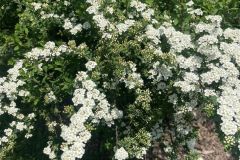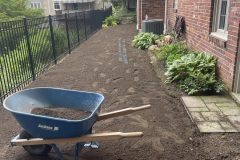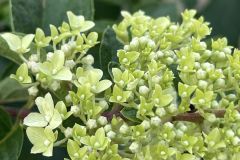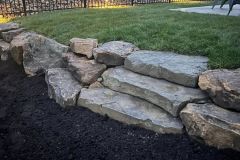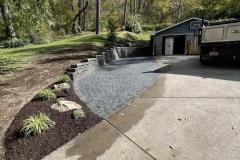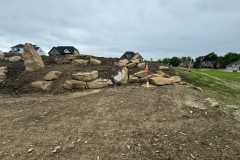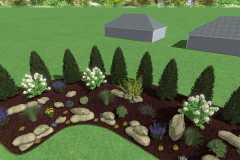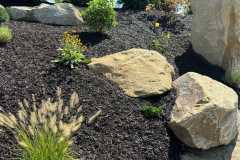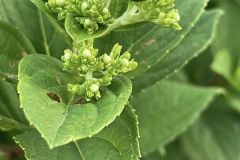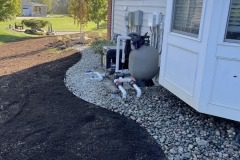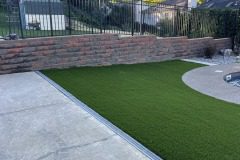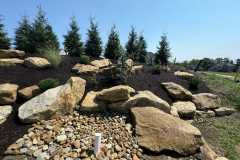Pittsburgh, a city known for its industrial past, is now experiencing a green renaissance as more and more people are embracing the importance of sustainable and eco-friendly practices in landscaping. One key element of this movement is the use of native plants in landscape design. Integrating indigenous flora not only contributes to local ecosystems but also provides a sense of regional identity. In this article, we’ll explore the benefits of using native plants in Pittsburgh landscaping projects and learn how American Groundskeeping American Groundskeeping is leading the way in this field.

Why Native Plants Matter
Native plants are those that have evolved and naturally occur in a particular region. They are adapted to the local climate, soil, and wildlife, making them more resistant to pests and diseases. As a result, native plants require less maintenance and fewer resources, such as water and fertilizers, to thrive.
Using native plants in landscape design offers several benefits. For one, they support local ecosystems by providing food and habitat for native wildlife, such as birds, pollinators, and other beneficial insects. This, in turn, helps maintain biodiversity and promotes a healthier environment.
Moreover, native plants help define a region’s unique character, giving landscapes a sense of place and history. By incorporating indigenous flora into Pittsburgh landscape design, we can celebrate the city’s natural heritage while also improving its ecological health.
Championing Native Plant Landscaping
American Groundskeeping, a leader in Pittsburgh landscaping, is committed to integrating native plants into their landscape designs. Their expert team understands the importance of indigenous flora and works diligently to create beautiful, sustainable outdoor spaces that also support local ecosystems.
Step 1: Research and Plan Your Native Plant Garden
Before diving into native plant landscaping, it’s essential to research and plan your garden. American Groundskeeping can help you identify the best native plants for your specific site conditions, such as sun exposure, soil type, and moisture levels. They can also recommend suitable plant combinations, taking into account factors like color, texture, and bloom time to create visually appealing landscapes.
Step 2: Choose the Right Native Plants
Selecting the right native plants is crucial for a successful landscape design. American Groundskeeping’s experienced team can provide guidance on which indigenous flora are best suited for your Pittsburgh property. Some popular native plants in the region include:
- Eastern Redbud (Cercis canadensis)
- Pennsylvania Sedge (Carex pensylvanica)
- Wild Columbine (Aquilegia canadensis)
- Swamp Milkweed (Asclepias incarnata)
- Virginia Bluebells (Mertensia virginica)
- New England Aster (Symphyotrichum novae-angliae)
Step 3: Proper Planting and Maintenance Techniques
Planting native plants correctly and providing appropriate maintenance are key to their long-term success. American Groundskeeping’s team is skilled in using proper planting techniques to ensure that your indigenous flora thrives. They can also provide guidance on maintenance, such as pruning, mulching, and watering, to keep your native plant garden looking its best.
Step 4: Enhance Your Landscape with Complementary Features
In addition to native plants, consider incorporating complementary landscape features to enhance your outdoor space. American Groundskeeping can help you design and install elements such as water features, hardscapes, and outdoor lighting that blend seamlessly with your indigenous flora, creating a harmonious and inviting environment.
The Benefits of Integrating Indigenous Flora into Pittsburgh Landscape Design
When you choose to integrate indigenous flora into your Pittsburgh landscape design, you’re making a conscious decision to support local ecosystems and celebrate the
region’s natural heritage. Here are some of the benefits you can expect from this approach:
Environmental Sustainability
By using native plants in your landscape, you’re contributing to the preservation of local ecosystems. These plants provide essential food and shelter for native wildlife, support pollinators, and help maintain overall biodiversity. Additionally, native plants are more resistant to pests and diseases, reducing the need for chemical pesticides and fertilizers that can harm the environment.
Water Conservation
Native plants are adapted to Pittsburgh’s climate and typically require less water than non-native species. This helps conserve water resources and reduces the burden on municipal water systems. Furthermore, incorporating native plants into your landscape can help manage stormwater runoff, as they are better equipped to absorb excess water and prevent soil erosion.
Lower Maintenance and Cost Savings
Because native plants are naturally suited to their environment, they generally require less maintenance than non-native species. This means less time and money spent on tasks like watering, fertilizing, and pest control. Additionally, native plants often have extensive root systems, making them more resilient in times of drought or extreme weather, reducing the need for costly replacements.
Aesthetic Appeal and Regional Identity
Native plants offer a wide range of colors, textures, and forms that can add visual interest to your landscape. By incorporating indigenous flora into your Pittsburgh landscape design, you’ll create a unique and authentic sense of place that reflects the region’s natural beauty and history.
Conclusion
Integrating indigenous flora into Pittsburgh landscape design is a powerful way to support local ecosystems, promote sustainability, and celebrate the region’s unique character. American Groundskeeping American Groundskeeping is at the forefront of this movement, offering expert guidance and services to help you create a beautiful, eco-friendly outdoor space that you can be proud of. By choosing native plants and working with experienced professionals like American Groundskeeping, you’re making a positive impact on the environment and fostering a stronger connection to the natural world around you.



